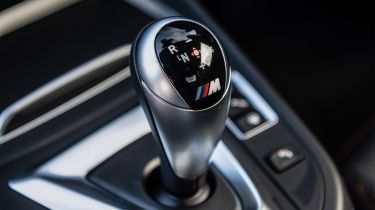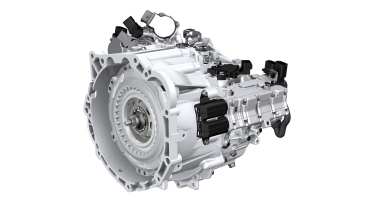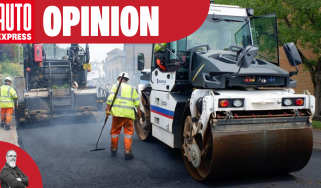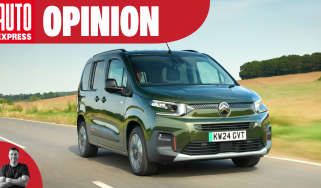What is a dual-clutch gearbox?
The dual-clutch automatic gearbox is a type of transmission found on many modern cars, but how does it work?

A dual-clutch gearbox is a type of automatic transmission that you’ll find on many modern cars, particularly family cars from Volkswagen, Skoda and Audi. Although it uses the word clutch in the name, there’s no third pedal at all and drives exactly like all automatic cars in most cases.
Other types of automatic gearbox include torque converter gearboxes and Continuously Variable Transmissions (CVTs), which work differently to dual clutch gearboxes but all have the same result: a car that has two pedals, accelerator and brake, and shifts gear automatically.
All cars with automatic gearboxes, not to mention single-speed electric cars, drive in the same way, so you never need to learn a new way of driving. Just release the brake to creep forward, press the accelerator to go faster, and hold the brake to stop. The only exceptions are usually fitted to high-performance sports cars and race cars, so don’t be worried about any normal automatic car being hard to drive.

Other terms you might have heard are a DSG gearbox or a PDK gearbox. These are the same thing as a dual-clutch gearbox and are essentially brand-names for the same basic technology. DSG stands for Direktschaltgetriebe (or Direct-Shift Gearbox) and is Volkswagen’s name for it, while PDK stands for Porsche Doppelkupplungsgetriebe (Porsche dual-clutch gearbox). BMW uses the acronym DCT for its dual-clutch transmissions.
How a dual-clutch gearbox works
While a normal automatic gearbox uses something called a torque converter, dual-clutch gearboxes are much more like manual gearboxes mechanically as they do have a clutch system. There are still only two pedals on a car with a dual-clutch ‘box as the clutch engagement is handled by electronics rather than the driver.
In a dual-clutch gearbox there are two clutches and two sets of gears - one set for the odd-numbered gears - first, third, fifth and so on, and the other for the even numbers - second, fourth, sixth and so on. The way the gearbox works is that software uses signals from the car to anticipate and pre-engage the next gear that will be needed.
If you’re accelerating in second gear it will prepare for third gear. When the system decides it’s time to change gear, or the driver presses the button to trigger a manual gear change, the clutch for that side of the gearbox engages - changing gear to third. The side of the gearbox that was providing second gear then selects fourth gear, anticipating the next gear change and getting ready. If you put the brakes on slowing the car while in third gear, the even numbered side of the gearbox will select second in anticipation of a change down.
This is why dual-clutch gearboxes are so fast; unlike a normal gearbox that has one set of gears, it does the shifting before the gear change even happens, pre-selecting the next gear ready for when it’s needed. With a super-fast clutch mechanism the whole gear change process can be done in tenths of a second.
Benefits of a dual-clutch gearbox
Dual-clutch gearboxes are known for being extremely fast to change gear. They’re great for sports cars because they tend to be more responsive than torque converter automatics - even though torque converter technology has improved markedly in recent years. When accelerating they are also nice and smooth, because the period between shifts is so small. You don’t get the brief moment of slowing down when the next gear is selected like with a conventional automatic. This means they are also good for normal cars as well.
Since electronics are used to change gear dual-clutch gearboxes can be tuned to be more comfortable and forgiving, more economical or more sporty just using software. This allows the use of driving modes like Eco and Sport to change the feel of the car.
Drawbacks of a dual-clutch gearbox
Dual-clutch gearboxes are heavier than traditional automatic and manual gearboxes, since a lot of components are doubled-up inside the gearbox itself. This is partly why companies like BMW have gone back to traditional automatics for their sporty cars, as it helps to keep weight down. Heavier cars are less efficient, so some dual-clutch models use more fuel than other equivalents, but it’s not by much.
Dual-clutch gearboxes are complex, so they often add thousands to the cost of the car. This can be off-putting, but they will make life easier, especially if you spend a lot of time in traffic. Sadly the place where the dual-clutch ‘box is at its worst is in traffic where the software is less accurate with its gear selection predictions. As you’re slowing and speeding up irregularly, it sometimes can’t keep up and can become slow to shift or jerky.
While modern dual-clutch gearboxes are reliable enough that we’d have no issue buying a new car with one, if you’re considering an older car then reliability should be a consideration. Repairs and maintenance on cars with dual-clutch gearboxes approaching 100,000 miles could be incredibly expensive, which is why you’ll see values of dual-clutch used cars start to drop as they approach higher mileages.
Get more car news, video, pictures and exclusive content on our Facebook page...
Find a car with the experts




